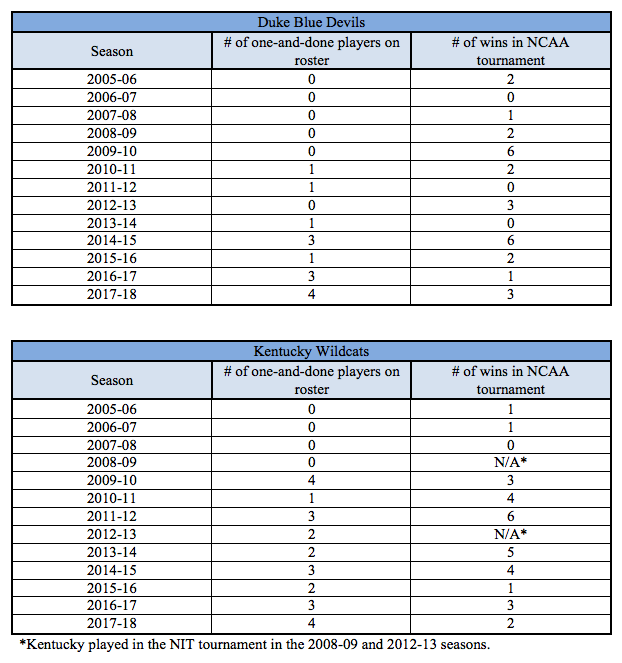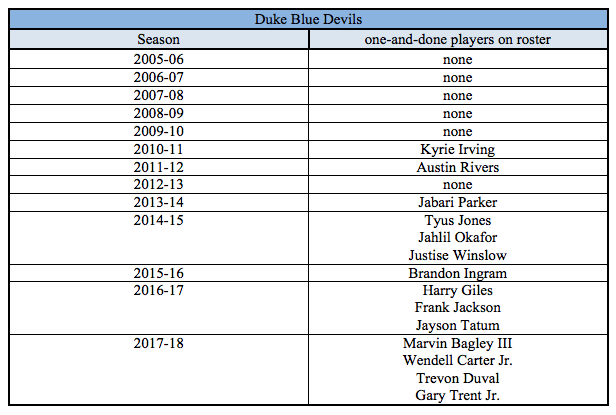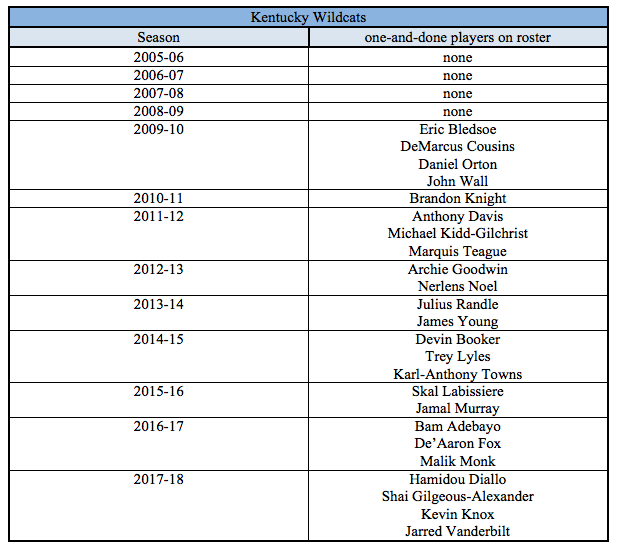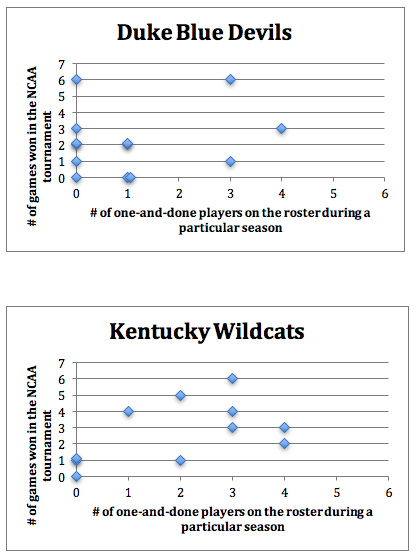Prior to the 2006 NBA draft, the NBA and the National Basketball Players Association formed a collective bargaining agreement (CBA) and changed the rules of draft eligibility. Perhaps the most notable of these changes was the added stipulation that players wishing to enter the league must be at least 19 years old in the year of the draft and at least one year out of high school. This requirement, which was meant to prevent young, underdeveloped players from entering the league, inadvertently brought about the era of “one-and-done” players, or players who only play one season of college basketball before entering the NBA draft. One-and-done players are incredibly talented and significantly contribute to their teams’ successes, so many people assume that a team with a one-and-done player on its roster will perform well in the NCAA tournament. It is even logical to think that the more one-and-done players there are on a roster, the further that team will advance in the tournament. This begs the question: is there a strong correlation between a team’s number of one-and-done players and degree of success in the NCAA tournament?
A Closer Look: Duke and Kentucky
In order to better understand the relationship between a team’s number of one-and-done players and degree of success in the NCAA tournament, let’s take a closer look at two teams who are known for adding one-and-done players to their rosters: Duke University and the University of Kentucky. The tables below show how many one-and-done players Duke and Kentucky have had on their rosters each season since the 2005 CBA was implemented and how many games each team won in that year’s NCAA tournament.



Scatterplots constructed using the data in the tables can more clearly show the relationship between each team’s number of one-and-done players and number of wins in the NCAA tournament.

Conclusion
A correlation coefficient r is a measure of the strength of the relationship between two variables, with r=±1 indicating a perfect linear relationship. Using the information in each of the tables above, I was able to determine that the correlation coefficients from Duke’s and Kentucky’s sets of data are r≈0.21 and r≈0.51, respectively. This means that, for Duke and Kentucky, there is a weak, positive correlation between the number of one-and-done players on the roster and the number of games won in the NCAA tournament. If we generalize these results to all Division I men’s basketball teams, we can say that teams with at least one one-and-done player typically make NCAA tournament appearances, but their performances in the tournament are inconsistent and erratic. In other words, having more star players on your roster does not necessarily improve your chances of progressing through the tournament and winning a national championship.
Duke’s and Kentucky’s 2019 NCAA Tournament Performances
Duke and Kentucky were both abounding with potential one-and-done players in the 2019 NCAA tournament, and many people expected these exceptional freshmen to lead their teams to the Final Four and beyond. Given the immense talent present on both teams, this outcome seemed entirely possible. However, Duke and Kentucky ended up losing to lower-ranked opponents in the regional finals. These results, while devastating to the teams’ players, coaches and fans, support our findings that, ignoring all other contributing factors, the presence of one-and-done players is not enough to guarantee success in the NCAA tournament.
Sources:
https://www.sports-reference.com/cbb/
http://www.espn.com/mens-college-basketball/tournament/history/_/team1/5847
http://www.espn.com/mens-college-basketball/tournament/history/_/team1/6313
http://www.espn.com/nba/draft/bestavailable
